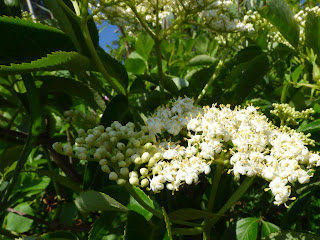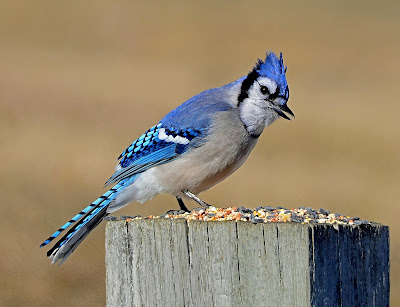The beauty of elderflowers fades fast
The beauty of elderflowers fades fast
As the last days of spring turn to summer, the lyrics to that Rodgers and Hammerstein song, “June is Bustin’ Out All Over,” keep running through my head. A song about how May was full of promises that she didn’t keep and how “the crowd of doubtin’ Thomases was predictin’ that the summer’d never come” ... but it finally has. So, as summer arrives and June winds down, I remember these lines “June is a love song, sweetly sung.” That’s how I feel about my neighborhood. Everything seems to be blooming all at once - the viburnum, the hawkweed and daisies and the grasses in the marsh and meadows.
 |
| Elderflower blossoms-harvest in early morning. |
A wonderful native shrub, elderberry, is blooming in my backyard - growing along the edge of the salt marsh, nestled in amongst some beach rose and overly aggressive multiflora rose with wild grape twining along the top. In the past I’ve focused on elderberry in the summer when the deep purple berries are ripe. I picked a basket-full last summer and made elderberry liquor, hoping to distill that essence of summer into something I could enjoy all winter. Sad to say it was a bit bitter. So, now I’ve moved on to elderflower liquor, inspired by Hank Shaw of Hunter, Angler, Gardener, Cook (honest-food.net). “Making your own elderflower cordial or liqueur is a way to remember spring, even in the depths of winter. Elderflowers are the color of butter and smell sweet and just a bit spicy. Their beauty fades fast, however. Will need to pick them before noon, as the aroma fades once the afternoon sun hits the flowers.” So, starting this week, as the elderflowers blossom, I intend to be out there every morning, harvesting some elderflowers to turn into liquid spring (but not all the flowers, because these flowers are utilized by a variety of pollinators and will be producing seeds for future elderberry bushes).
 |
| Elderberry bushes along the marsh |
Elderberry are fairly easy to identify. The flower clusters are arranged as an umbel - like an umbrella, all the flower stalks radiate from the same point. Right now, the white flowers of the elderberry umbel are blooming - look for them, they are common along most wetlands and roadway ditches. Once you learn to identify an elderberry you really should eat it (in moderation, like I mentioned before, we need to make sure these shrubs flourish). According to the USDA plant database: “The entire flower cluster can be dipped in batter and fried while the petals can be eaten raw or made into a fragrant and tasty tea. The flowers add an aromatic flavor and lightness to pancakes or fritters.” After reading that I tried some of the flowers and they really tasted great!
I always worry about foraging around here, you need to think about over-harvesting and possible sources of contamination from the road or pesticides or herbicides. But, on the other hand, if you can rule out the issues with foraging, it is so empowering to look at the natural world around us and see us as part of a food web, to think about what we can eat in the out-of-doors versus the supermarket.



Comments
Post a Comment